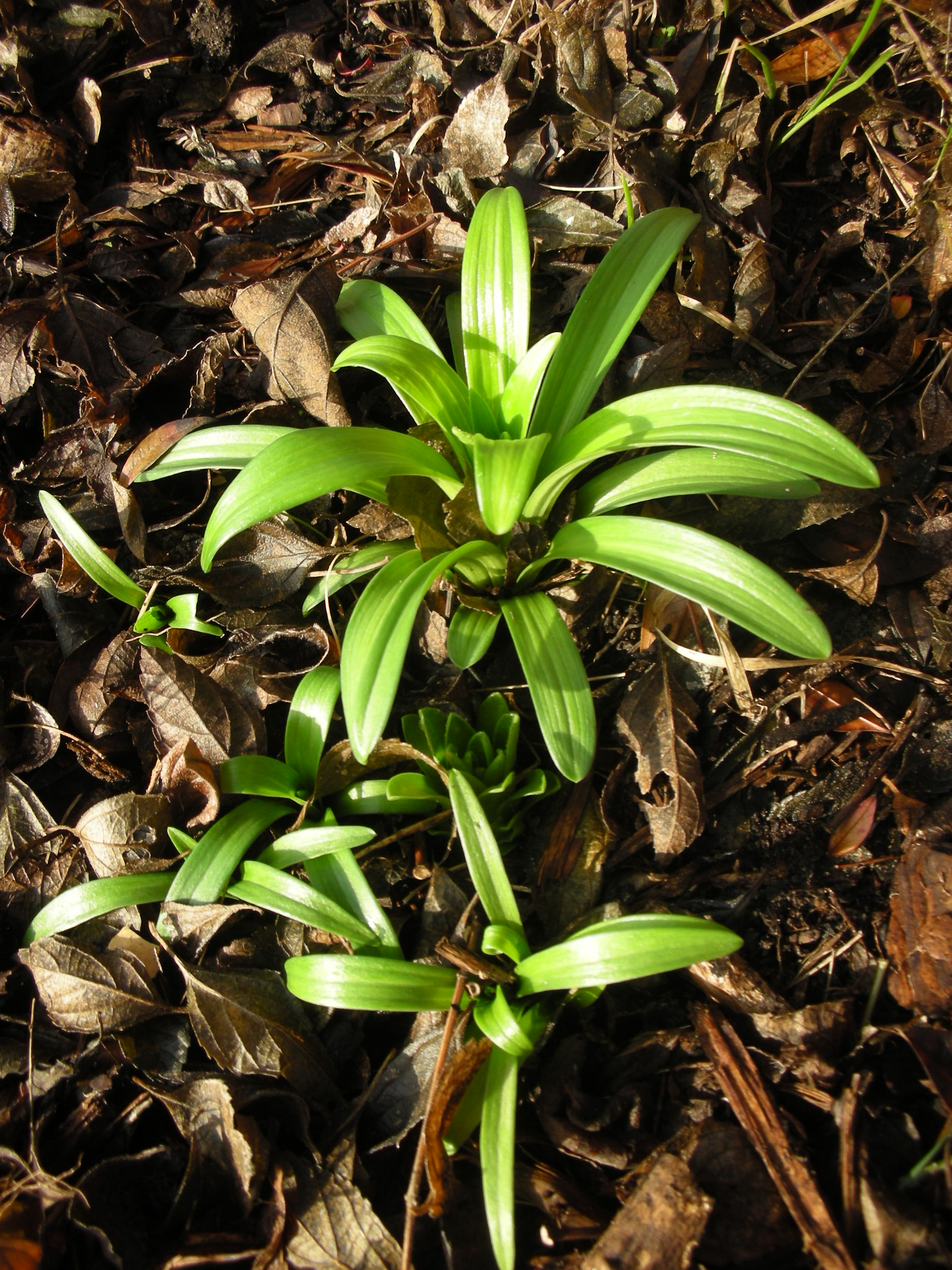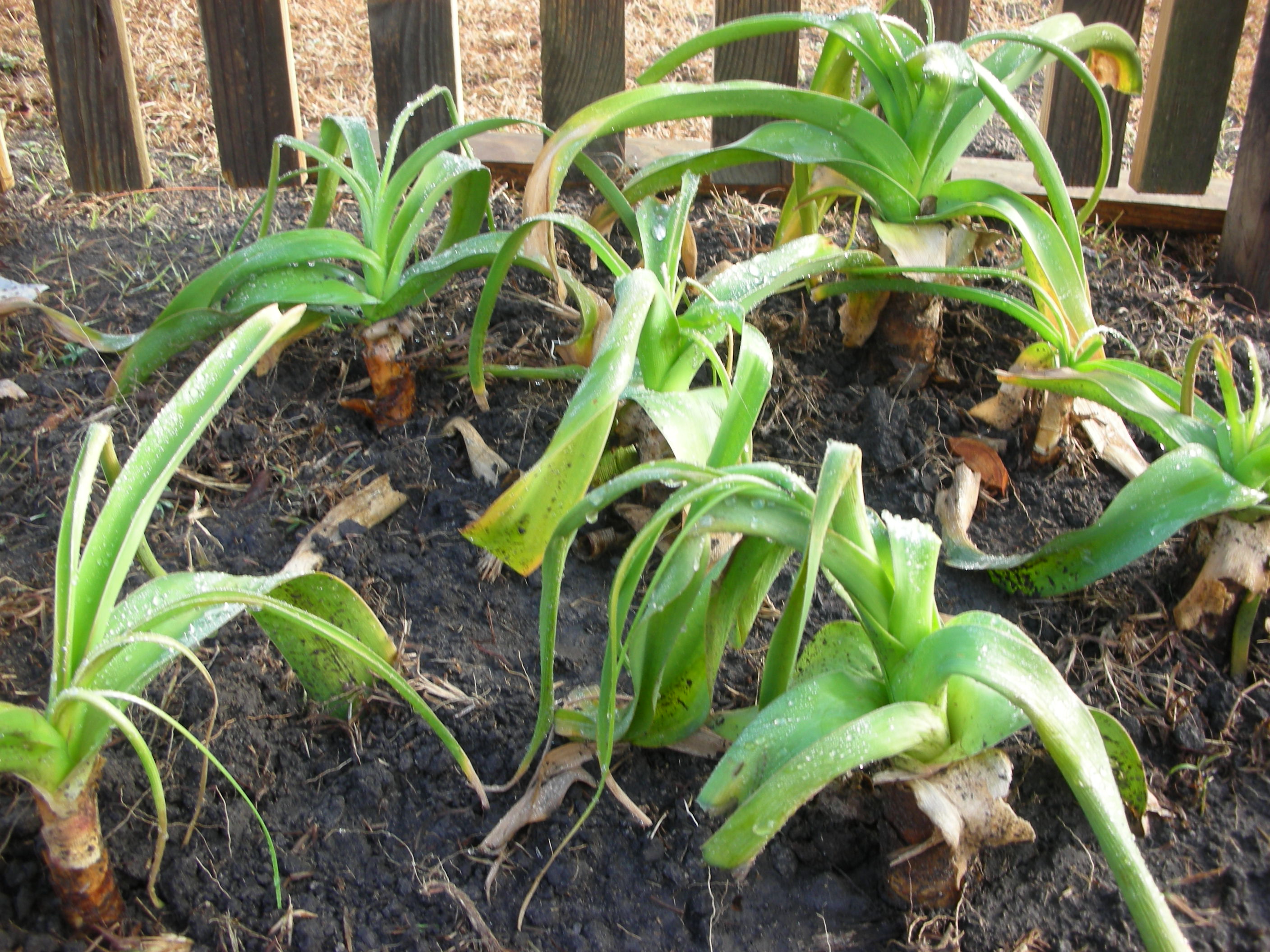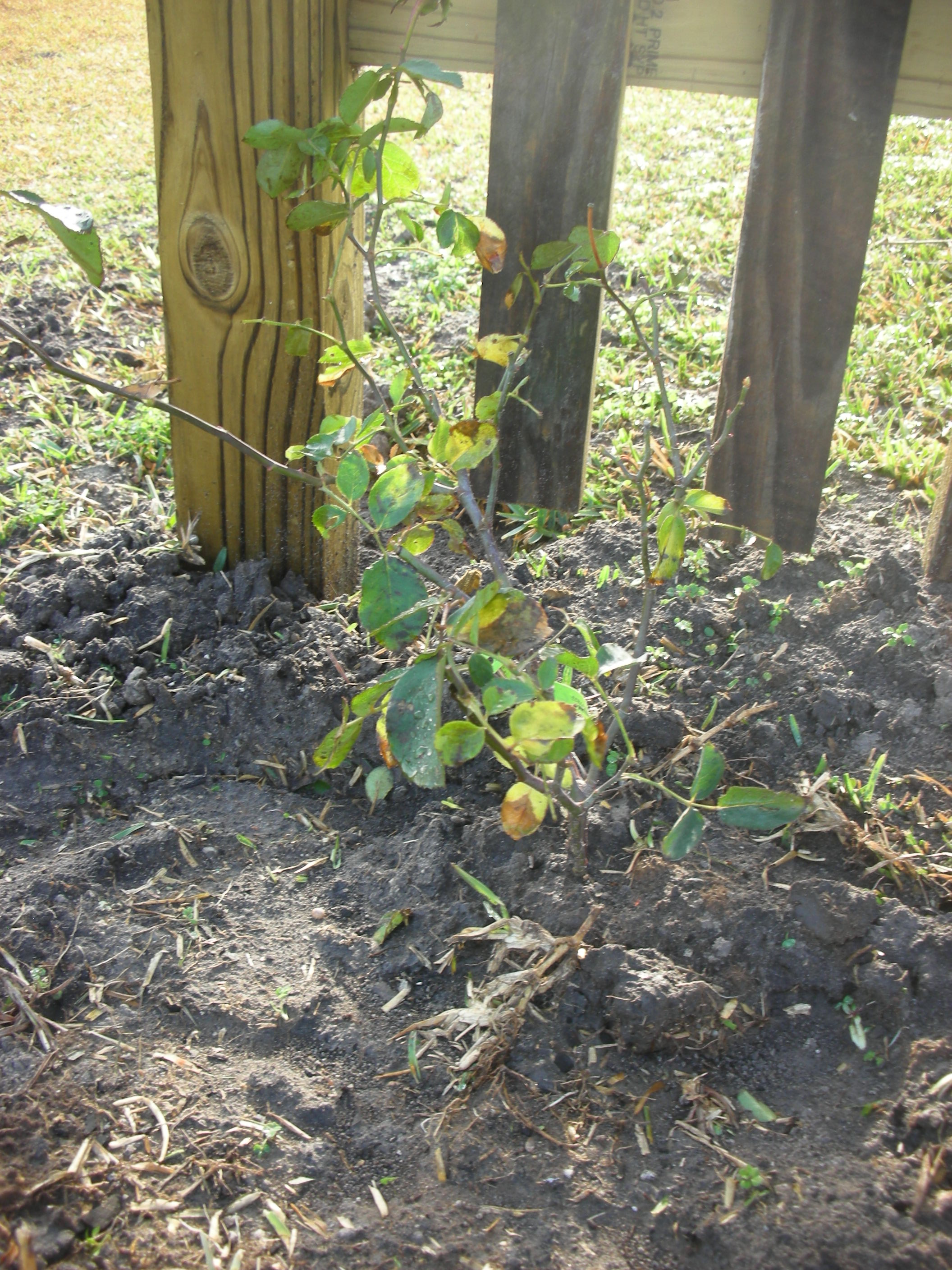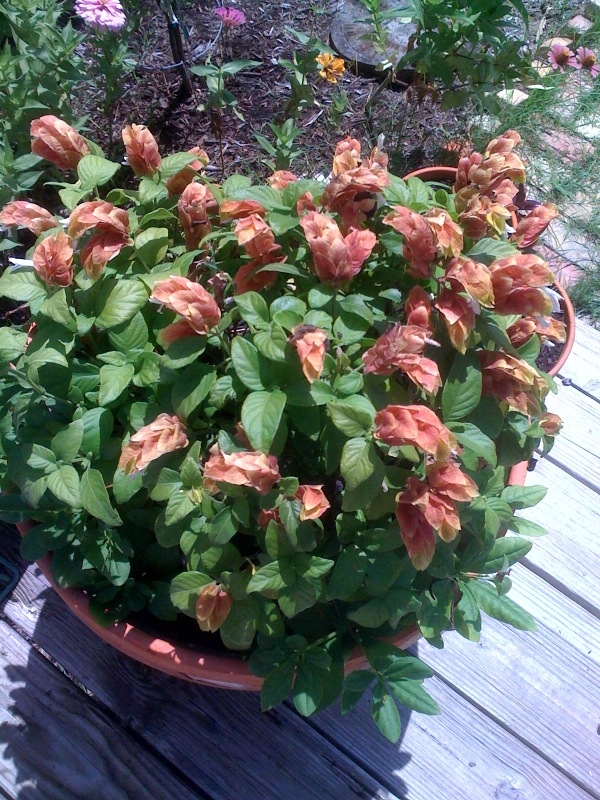A couple of weekends ago several of my friends from A&M met me at my “bulb honey hole” for a little “bulb rustling”. I have written about my bulb “honey hole” before. It is an abandoned home site that was tended by an incredible gardener for 80 plus years. For a long time I was reluctant to share. However, I have now harvested so many bulbs for my own gardens that I felt it would be great to let a few of my buddies in on my secret.

The Bulb Hunters. From left: Mengmeng Gu, Cynthia Mueller, Sally White, Me, Michal Hall, Charlie Hall, Karin Wallace, Russ Wallace
Karin and Russ Wallace, Mengmeng Gu, Charlie and MiChal Hall, and Cynthia Mueller joined Sally and I for a very fun filled morning of digging in the dirt. Like I mentioned before, this homestead was tended by an incredible gardener for some 80 plus years. Because of her work, the soil in the yard is the most perfect organic, rich, sandy loam I have ever seen. This rich, sandy loam has allowed the bulbs that were planted many years ago to thrive and divide with abandon. Because of this, there are now enough Italicus narcissus (Narcissus tazetta, “Italicus”), Red Oxbloods (Rhodophialia bifida)and Bulbispermum crinums (Crinum bulbispermum) to stock several nurseries.
When harvesting bulbs, it is fairly important to be aware of when they bloom. Almost all bulbs flower at a certain time and then send up their foliage after the flowers fade. This foliage is very important as it is what is gathering the sunlight that the bulbs need to make the carbohydrate storage that the flowers will need during bloom season. Due to this, the foliage needs to stay in place until it browns.
Each of the bulbs we were harvesting bloom at different times. If we were completely reliant on the calendar, our weekend of March 31 was really only the “optimal time” to harvest the Oxbloods. Since they bloomed in early fall, their foliage has been “bulking up” their bulbs for the past six months. Because of this, the oxbloods can be dug and have their tops removed immediately. You can then dry them a little in the sun and store them in a cool dark place for later planting.
Since the narcissus just bloomed in January, they need to have about half of their tops removed and then be replanted as soon as possible. The remaining “tops” will allow them to continue the photosynthesis required for their January bloom. If the bulbs do not get enough carbs stored up, they may not bloom the first year after transplanting. That is ok. Just keep watering them and wait until the following season.
Crinums (especially bulbispermum) are kind of a different animal. Bulbispermum can bloom at anytime. The varieties here usually bloom for me about three times a year. My good friend Dr. Bill Welch likes to say that as far as he knows, no crinum has ever died. This is a very appropriate statement when it comes to this very durable bulb. Because of their durability, they can be harvested about anytime. Just cut their foliage in half and replant within a week or so and they will be fine. Crinum bulbispermum is native to southern Africa. They like wet, marshy areas but they can also withstand drought. Like all bulbs, they prefer a loose, well drained soil but they grow very well in clay. Basically, they will grow anywhere. If you are looking for a bullet proof plant, then this is it. There are several colorations of this family of crinum. The ones on this homestead are either almost pure white or red and white stripped. The stripped variety is often called “milk and wine” crinums.
All and all, it was a perfect day. The weather was great, the soil was loose and the mood was bright. All of my friends got a whole bunch of wonderful bulbs and Sally and got a great memory of horticultural fun shared with people we love. Thanks to all of my friends for a wonderful day!

























